Six historic and next-generation-style accommodations to visit in Hakone!
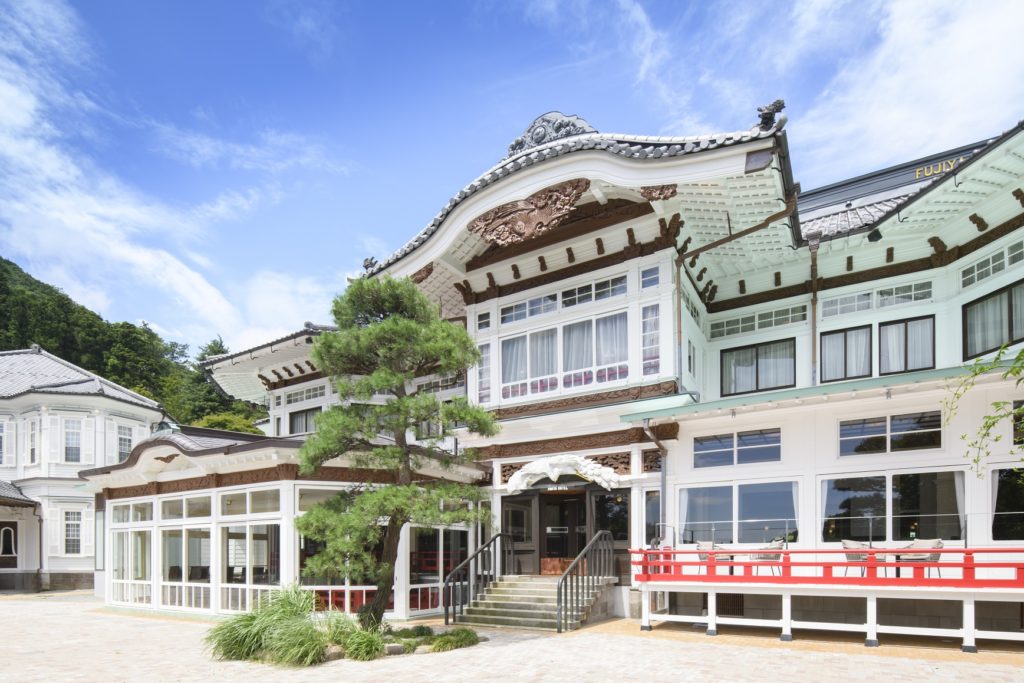
Hakone, which has been a popular hot spring area ever since the Edo period, offers a broad range of attractive accommodations, both old and new. The area contains accommodations with traditional buildings designated as tangible cultural properties, Japan’s first authentic resort hotel, a long-standing inn with a famous flower garden, a lakeside hotel with a view of Mt. Fuji and Lake Ashi, and a next-generation hotel with smart check-in system.
And in the castle town of Odawara, there is a hotel with a hot spring on a high floor offering a wonderful view. All of these facilities are full of appeal, and we hope that you enjoy the history and sense of time of each.
Recommended Hakone Accommodations
Tonosawa
Enjoy the design of this famous 20th century Japanese heritage building / Fukuzumiro
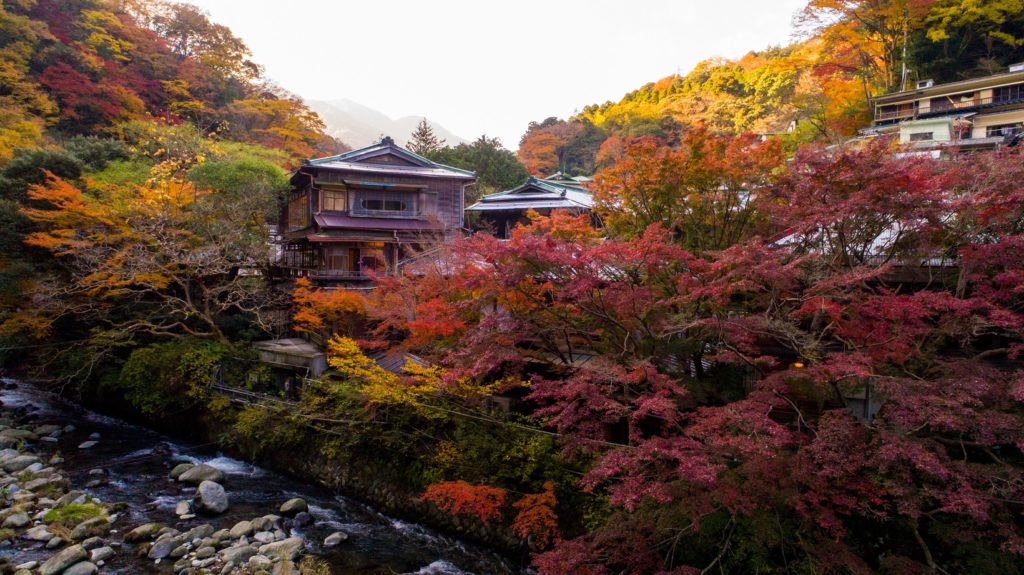
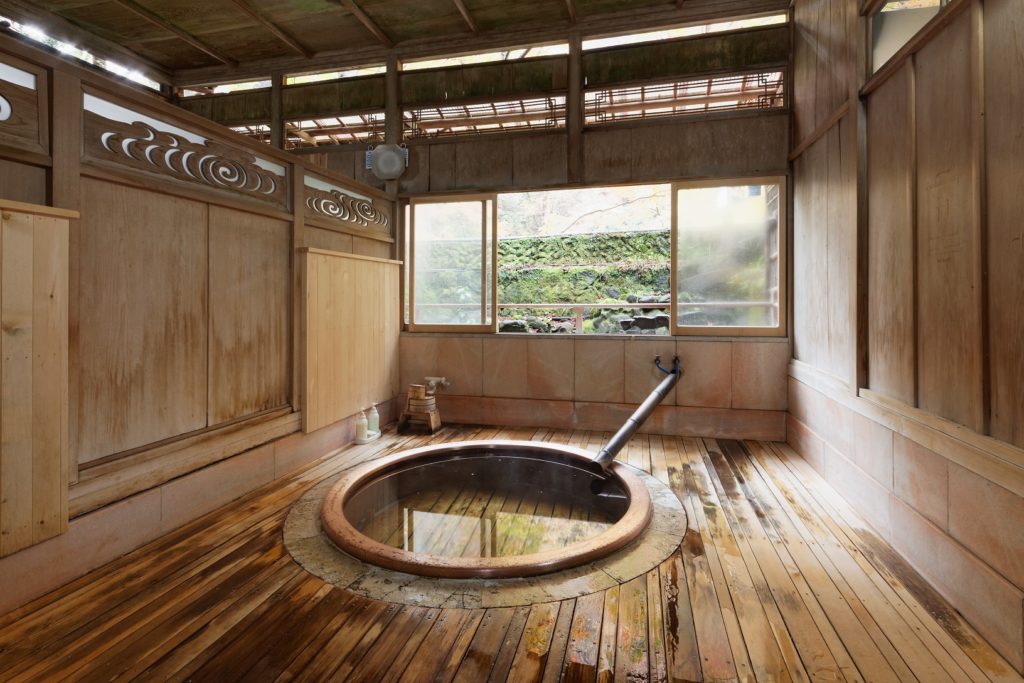
Since its establishment in 1890, this beautiful hot spring inn has been loved by many writers and painters. It has been designated as a registered tangible cultural property and selected as an example of 20th century Japanese heritage for its excellent design and techniques based on traditional Japanese construction methods passed down since ancient times as well as delicate workmanship using rare species of bamboo. Each of the 17 guest rooms, named after trees (e.g., bamboo, plum, cherry tree), are designed differently, and each room was the location of an interesting experience by a great writer. The bath is made from a large pine tree that has been hollowed out, and you can enjoy the hot spring water from Tonosawa, one of Hakone’s seven top hot springs. The inn offers a time-travel experience back to the good old days of Japan.
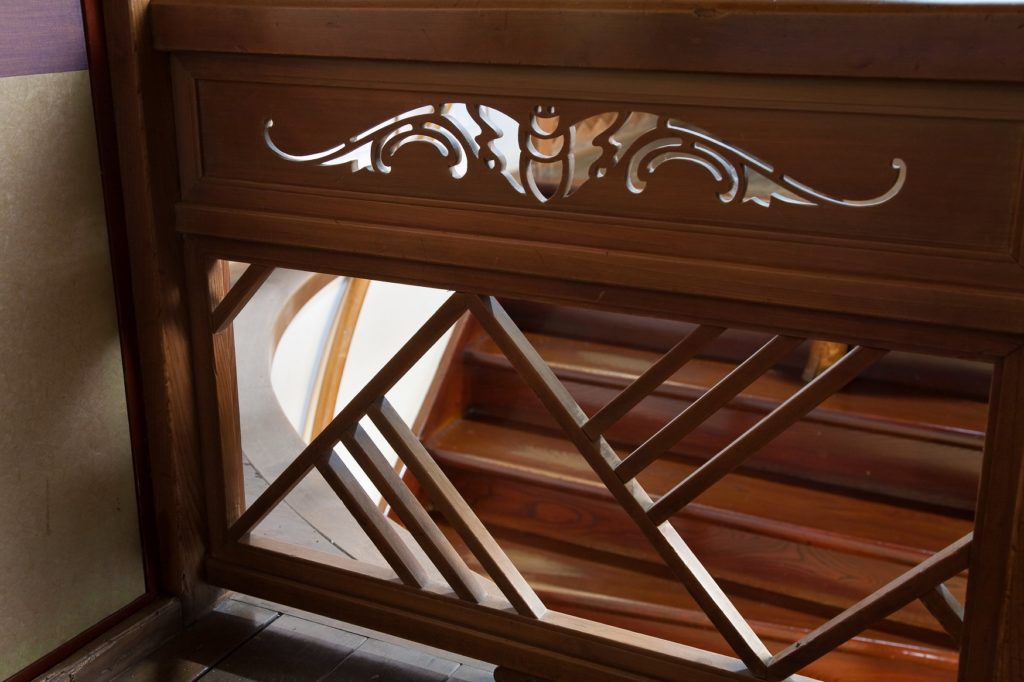
Fukuzumiro is a sukiya-style building, which incorporates the stylistic beauty of a tea ceremony room, and it was built using methods of Kyoto, which were considered the pinnacle of urban residential architecture at the time. The building is unique in Japan in that only rare species of bamboo are used in its design. In addition, the corridor railings are decorated with cut-outs of bats representing the five types of luck. These reveal the superb craftsmanship of the 1920s. We hope you enjoy the beauty of the bamboo and handcrafted workmanship, which required a lot of time and effort.
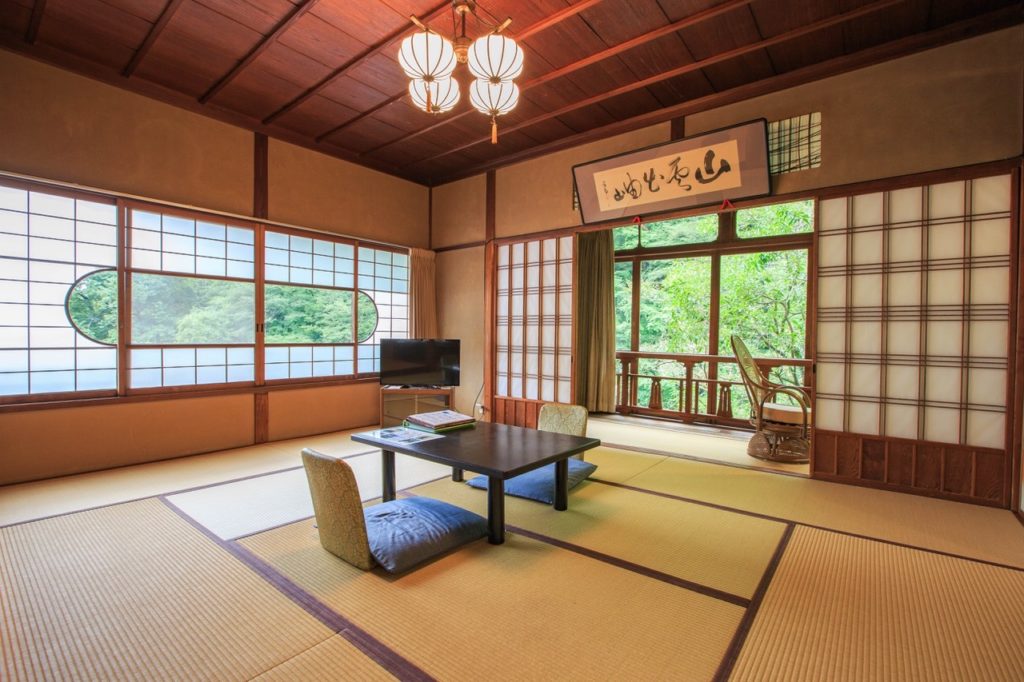
At Fukuzumiro, you can enjoy the old-fashioned Japanese inn style in the interior designs of the guest rooms as well as in the cuisine. The inn retains a system that is rare today, in which kaiseki cuisine, renowned for its taste and quality, and made using seasonal ingredients, can be served in guest rooms. In addition, dishes are served separately so that you can enjoy hot dishes while still hot and cold dishes while still cold. Meticulously prepared dishes are carefully brought to you. You can enjoy dining in the privacy of your own room in a relaxed atmosphere.
The rooms, cuisine, and hot springs are all to be savored deeply as you spend time in this famous building, which is considered an important asset of Japan and which has been loved by the great writers down through the generations.
Click here for room options and plans
Miyanoshita
A Miyanoshita landmark with a story spanning 145 years of history / Fujiya Hotel

Fujiya Hotel was established in 1878 as Japan’s first full-fledged resort hotel in Miyanoshita, which was frequented by Western visitors. It began as a single Western-style building, but now––roughly a century and a half later––it has grown into a magnificent grouping of buildings that symbolizes Hakone. Many of the buildings are registered as tangible cultural properties, and in 2020, they underwent major renovations to make them even more attractive. The grounds contain two historic Western-style buildings: the Main, which displays a uniquely Japanese character by incorporating Japanese design elements into the overall Western design of the building, and the Comfy Lodge & Restful Cottage, a Western-style building typical of the Meiji period (1868-1912). The grounds also contain two buildings constructed in the mid Showa period (roughly from around the 1930s to the 1960s): the Flower Palace, a building with a unique blend of Japanese and Western design elements, and the Forest Wing, which offers a great view.
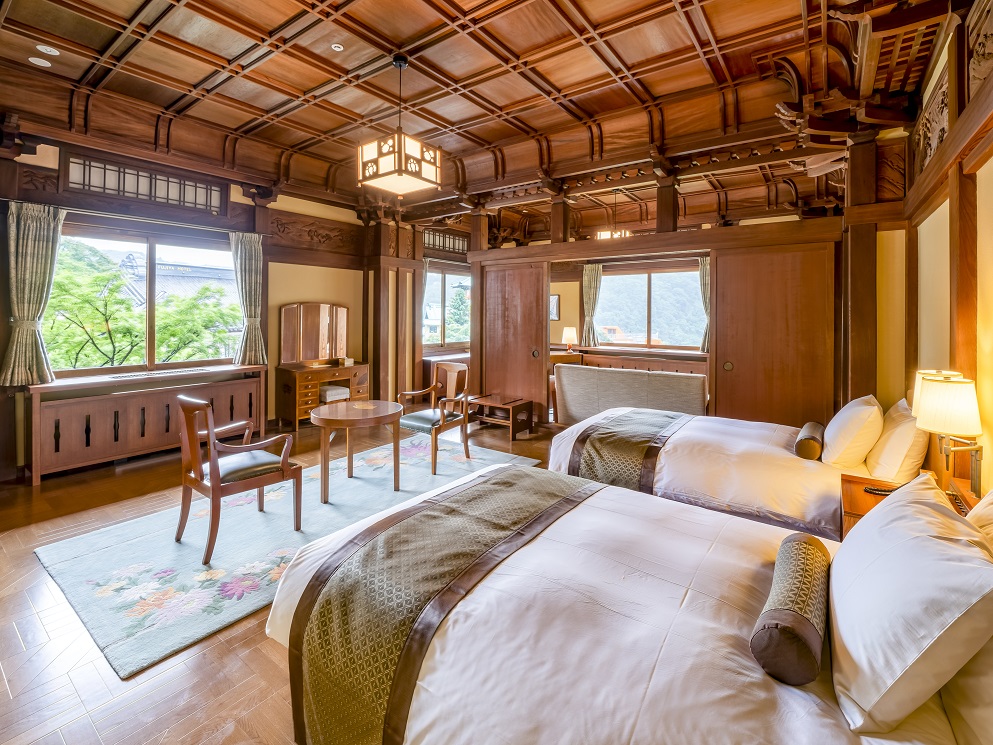
At the Main, you can enjoy the Western-style, which was chosen to appeal to guests from overseas at the time of its construction in 1891, as well as rooms with a blend of Western and Japanese design elements. At the Comfy Lodge & Restful Cottage, which was built in 1906 and is a typical Western-style building from the Meiji era, you can enjoy rooms reminiscent of a classical and prestigious European hotel. At the Flower Palace, built in 1936, you can enjoy rooms with a blend of Japanese and Western styles featuring a latticework ceiling like in a temple and a Western-style bed, and at the Forest Wing, built in 1960, you can enjoy rooms with Japanese-style interiors and a view of the garden from the window. Being able to select a room from this richly varied and unique lineup is an attractive feature of this hotel.
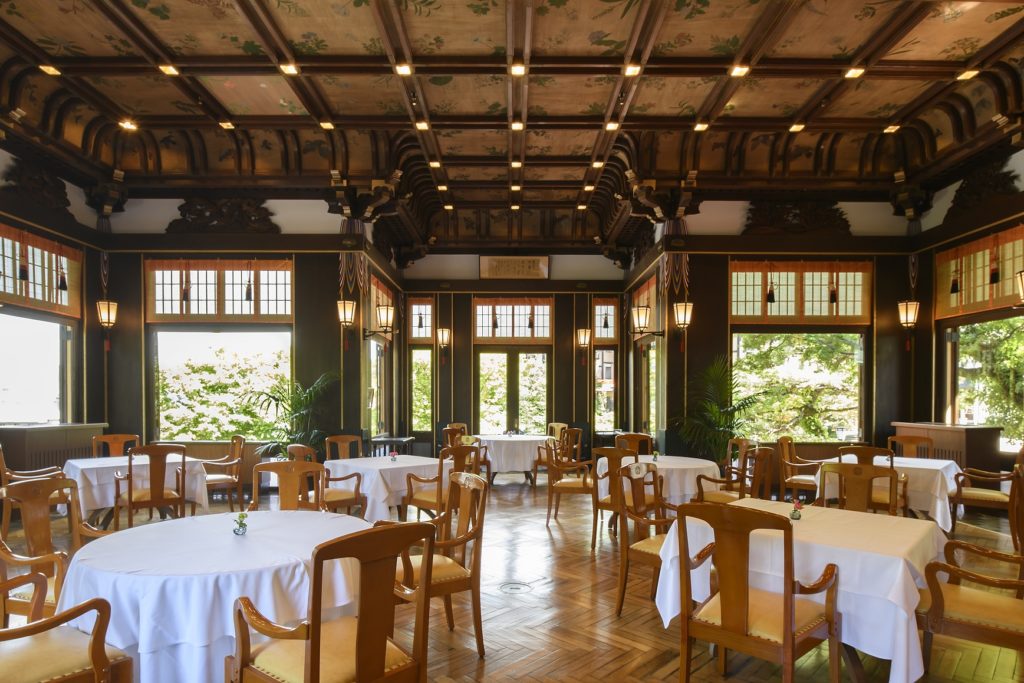
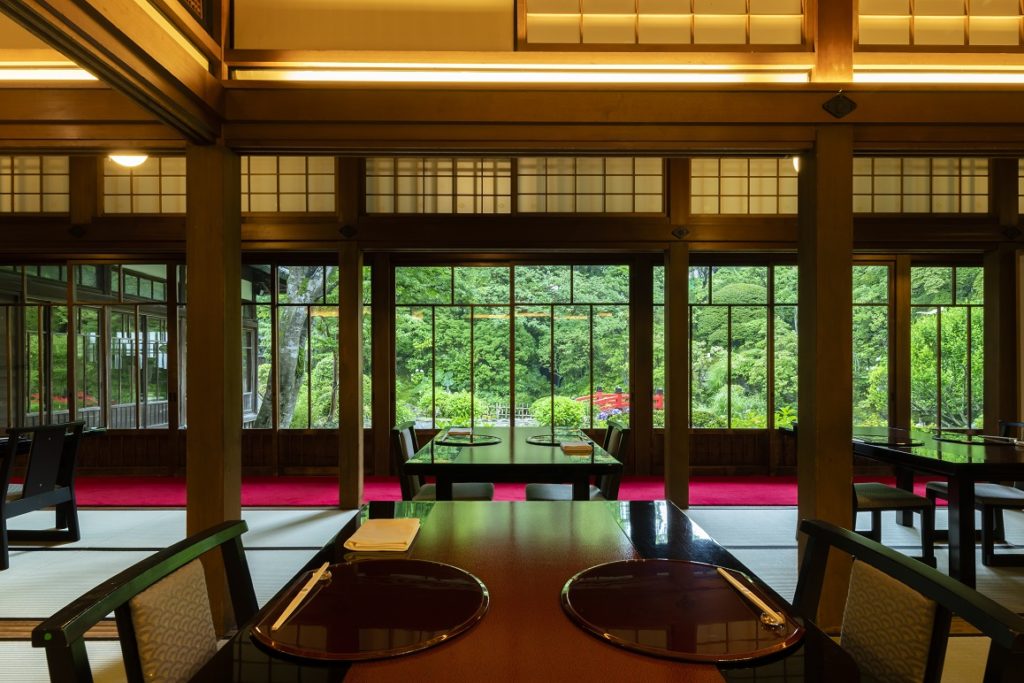
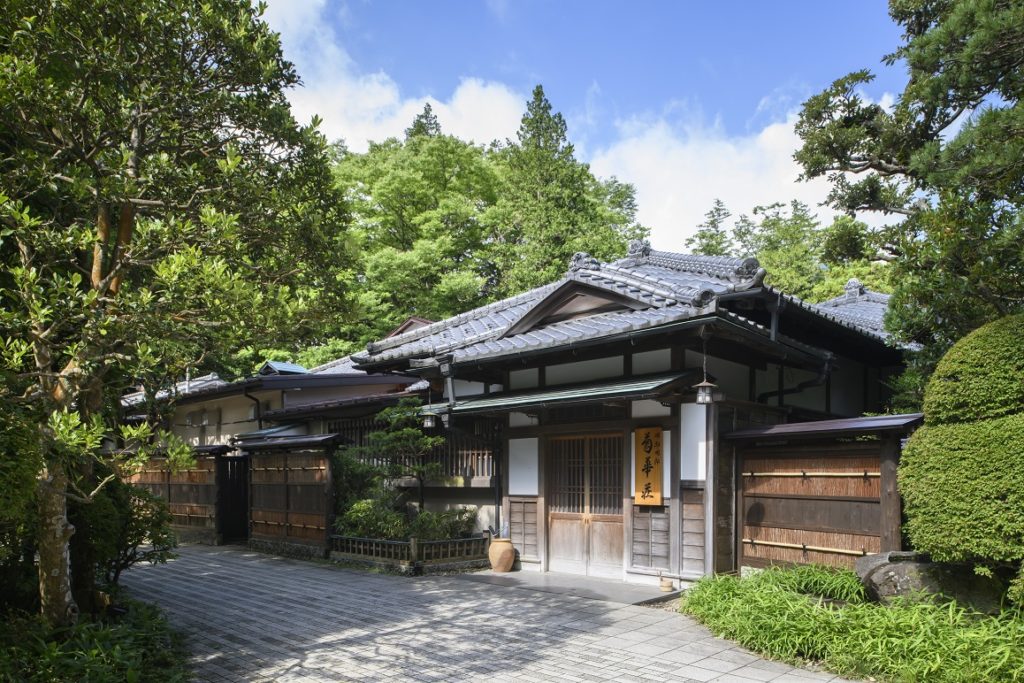
The Main Dining Room “The Fujiya” features a prestigious latticework ceiling reminiscent of a temple. The ceiling is decorated with Alpine flora, and the carvings around the fanlights and throughout the room are another highlight. You can enjoy French cuisine made using recipes that have been handed down since the establishment of the hotel. In addition, at Restaurant Cascade, a restored banquet hall originally built in the late 1920s, you can enjoy Western cuisine. At Kikka-so, a purely Japanese building built in 1895 as a villa for the imperial family, you can enjoy Japanese cuisine. Being able to select and enjoy your preferred type of cuisine at this long-standing hotel, with each restaurant having its own unique atmosphere, is another appealing aspect of this hotel.
Click here for room options and plans
Kowakidani
See the beautiful garden Houraien and a famous building registered as a tangible cultural property / Mikawaya Ryokan
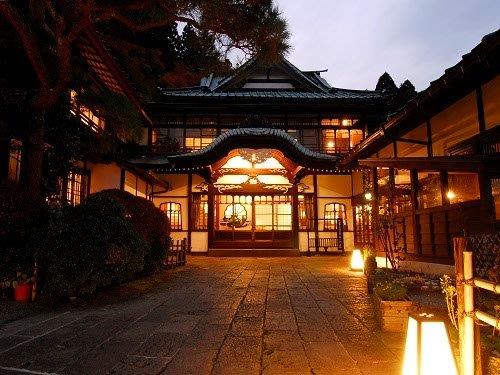
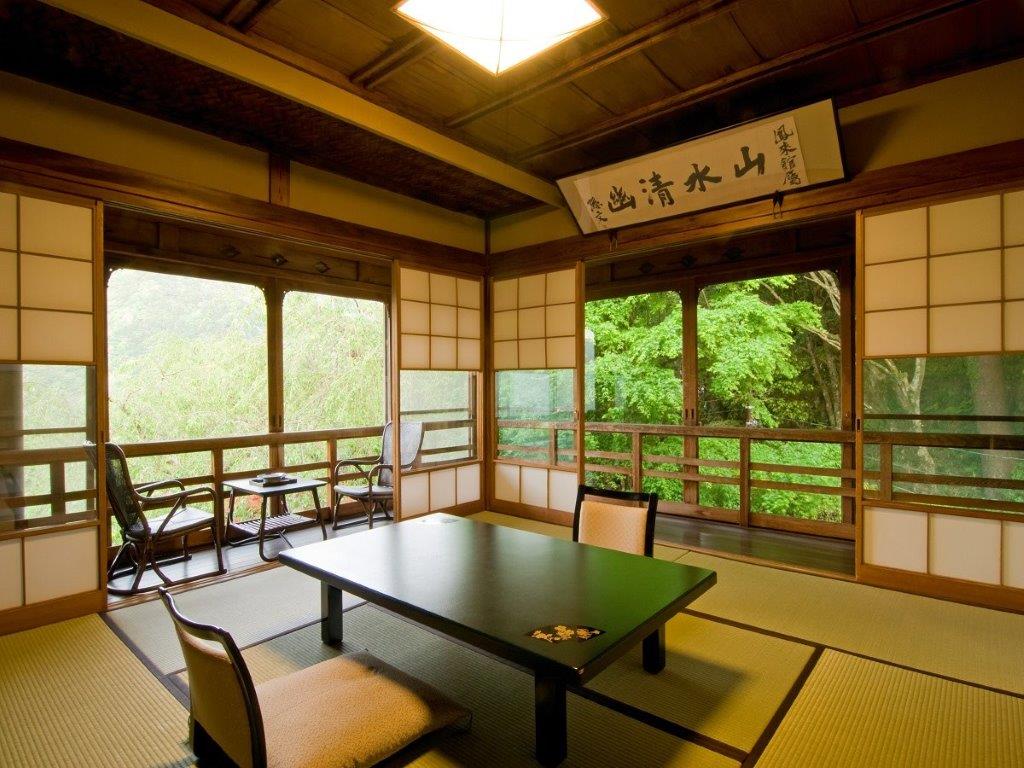
Upon arriving, you are welcomed by the characteristic entrance featuring a decorative roof and structure like that of a temple or shrine (with bow-shaped eaves and a gabled, hipped roof). Since its establishment in 1883, this inn has accommodated painters and literary figures such as Takehisa Yumeji and Yosano Akiko, as well as Sun Yat-sen, the father of the Chinese Revolution. The beautiful main building, designed in an ancient Japanese style, has been designated as a nationally registered tangible cultural property. Each guest room has a different atmosphere, with some having a view of the cherry blossoms outside the window and some equipped with an open-air bath. In addition, the lounge in the building offers a view of the spacious garden and the Hakone mountains. It operates as a café during the day, and you can enjoy matcha and Japanese sweets. We hope you savor these along with the historical building and scenery.
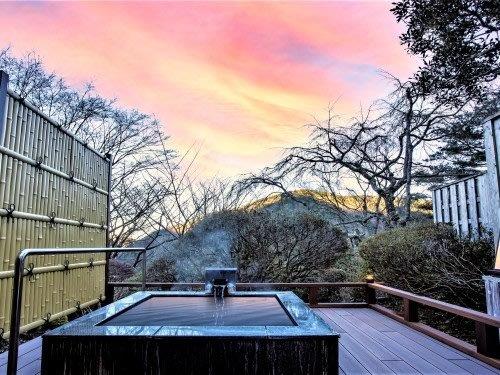
The grounds contain the main building, designated as a nationally registered tangible cultural property, an annex, and private villas. The main building has four Japanese-style rooms where you can enjoy the atmosphere of a good old-fashioned Japanese luxury inn, and some of the rooms are also equipped with an open-air bath. The annex has five rooms with an open-air bath on the balcony, two Japanese/Western suite type rooms comprised of two separate yet adjoining rooms, and nine standard type rooms. The private villas offer four Japanese-style rooms with different atmospheres as well as open-air baths with a view of the garden. If staying in a room without an open-air bath, in the main building, you can enjoy an open-air bath and an indoor bath fed with hot spring water from the source. All meals are served at the restaurant.
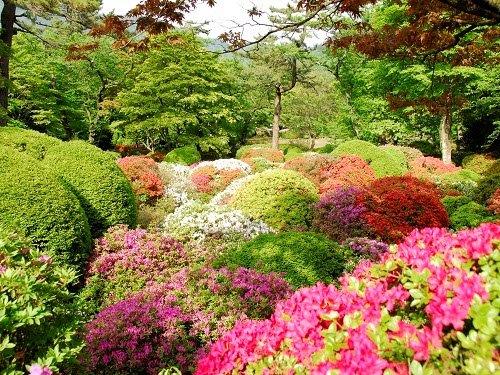
The garden Houraien adjacent to the grounds was opened in the early Taisho era (roughly around the 1910s) by Kyozo Enomoto, the founder of Mikawaya Ryokan. The spacious 16,000 m2 garden is well-known for its azaleas. From late April to mid-May each year, approx. 30,000 flowers of roughly 40 varieties are in full bloom. Many of them were originally transplanted from Okubo, Tokyo, during the Taisho era (1912-1926) and are now considered rare species. The garden attracts many visitors in spring for its cherry blossoms and azaleas, and in fall for its crimson foliage. When staying at the hotel, we hope you take a stroll through the garden, where the scenery varies from season to season against the natural backdrop of the Hakone mountains.
Click here for room options and plans
Motohakone
Enjoy Mt. Fuji and Lake Ashi at a spectacular hotel where flowers also collaborate / Hotel de Yama
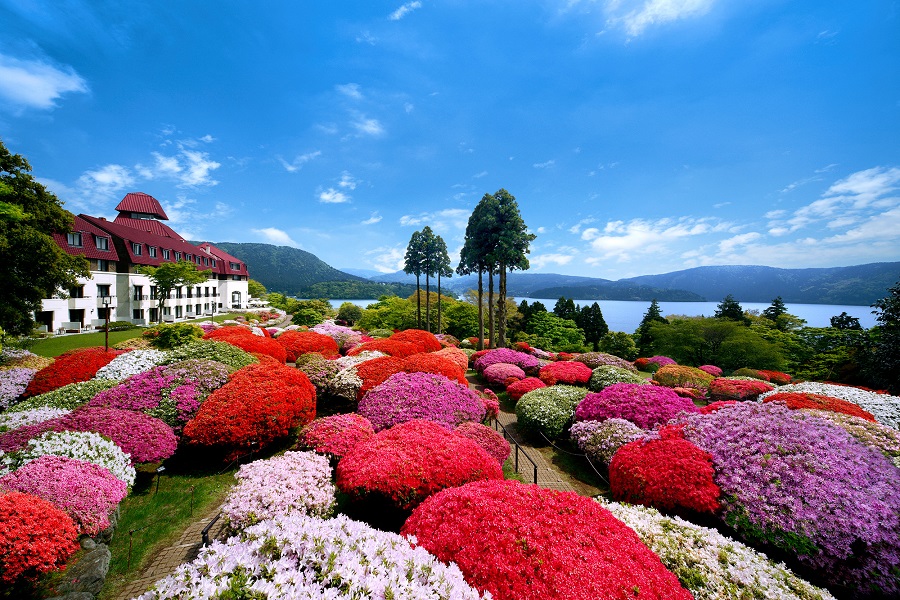
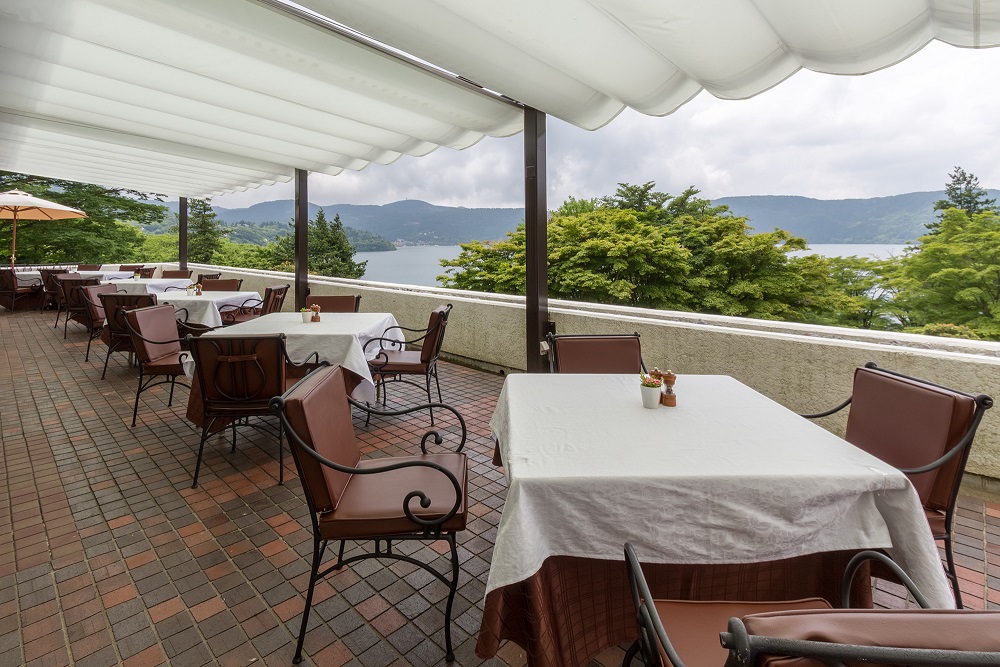
This hotel has become a Lake Ashi landmark, with its main building resembling an old European castle built on the lakeside. At this location, which was the former villa of the businessman Baron Iwasaki Koyata, who chose this spot to entertain guests from all over the world, you can enjoy a spectacular view of the area. Inside the hotel, there is an observation room with a panoramic view of Lake Ashi, a restaurant with terrace seats overlooking Mt. Fuji and Lake Ashi, and a dessert restaurant built to extend out over Lake Ashi. At this hotel, you can enjoy meals and tea from a spot with a truly spectacular view.
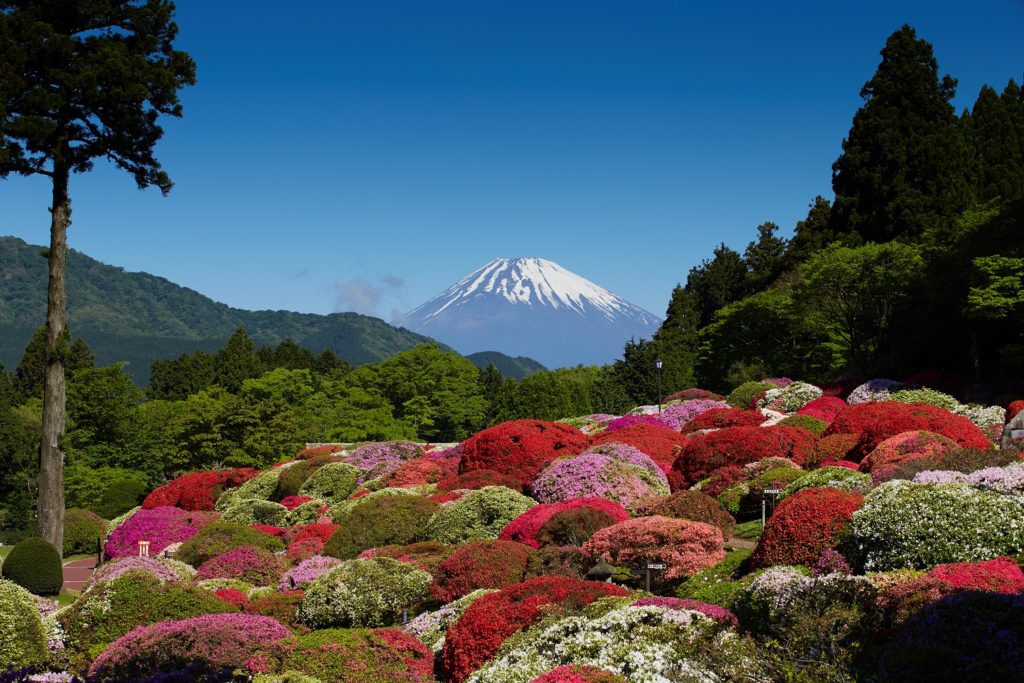
On a clear day, you can see Mt. Fuji from the hotel garden. The collaboration between the colorful azaleas and Mt. Fuji is a breathtakingly beautiful sight. There are 84 varieties of azaleas here that were planted when the was used as a villa, including more than 30 precious varieties such as Edo Kirishima, Oyama azaleas, and Ryukyu azaleas from the Edo period which cannot be found anywhere else. This is a famous spot for azaleas, including historically valuable varieties such as the Western rhododendron, which Baron Iwasaki was the first to import to Japan from England. The hotel also offers a beautiful view throughout all four seasons, including a rose garden where you can enjoy both early and late-blooming roses, crimson foliage in fall, and snow-capped Mt. Fuji in winter.
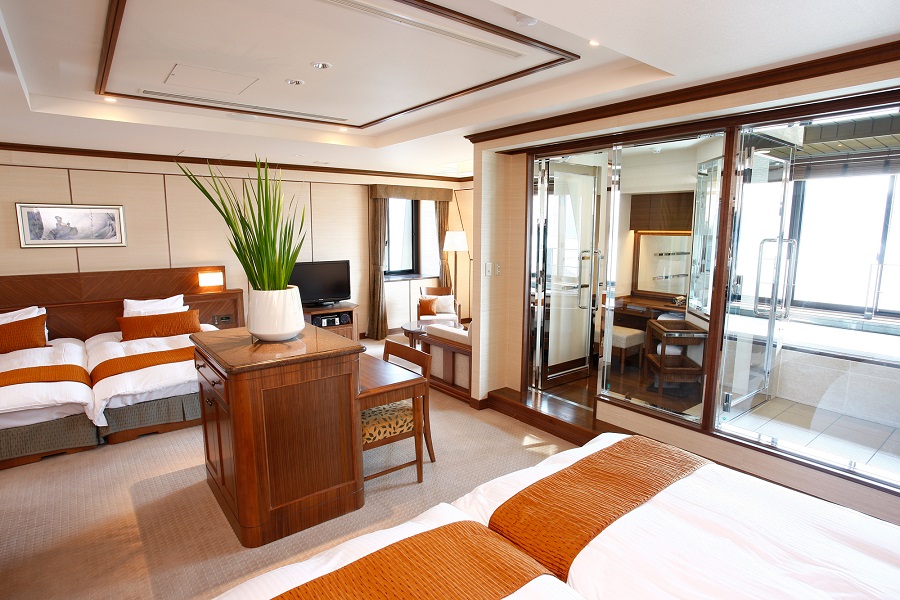
As you would expect of a long-standing hotel in Hakone, Hotel de Yama offers a comfortable and relaxing atmosphere with rooms designed differently on each floor. You can enjoy the surrounding scenery from rooms with a variety of attractions, including simple, functional, spacious rooms with a view of the garden and Lake Ashi, standard twin rooms with views of the majestic mountains of Hakone, Mt. Fuji view deluxe twin rooms with a view of the garden, Lake Ashi and the magnificent Mt. Fuji standing in the background, and premium twin rooms with a bath offering a great view overlooking Lake Ashi.
Click here for room options and plans
Kowakidani
Smart check-in at a next-generation resort hotel / Hakone Hotel Kowakien
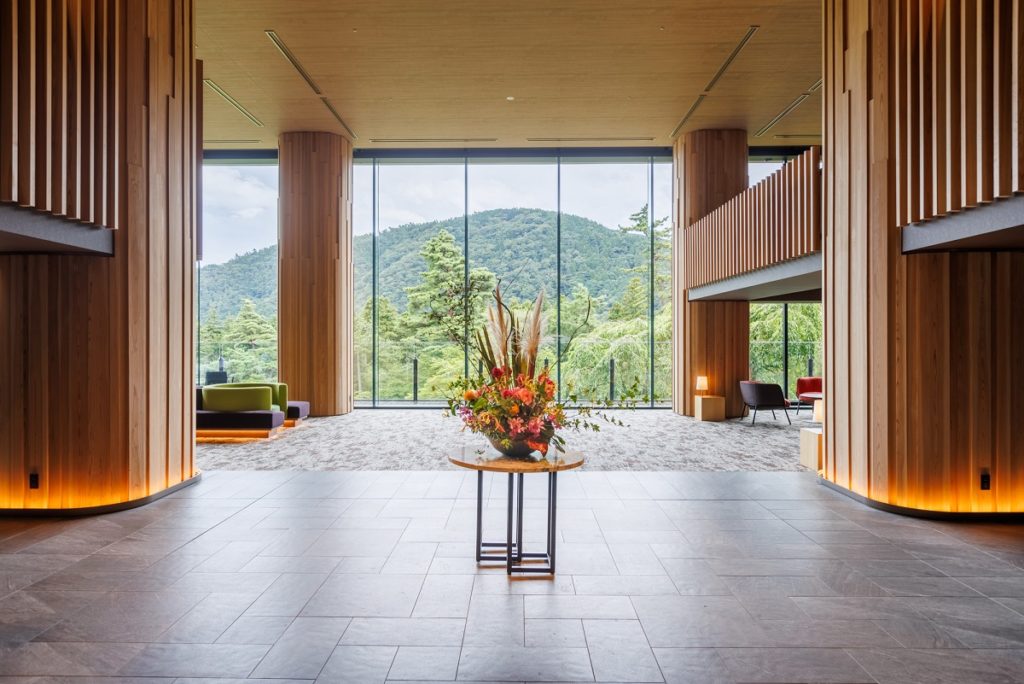
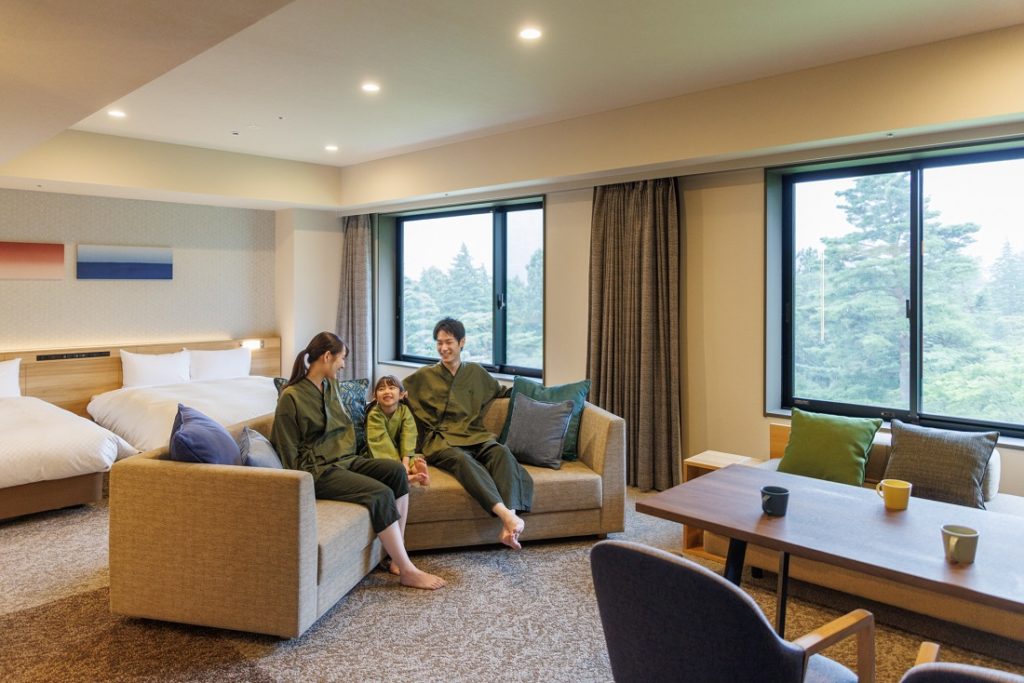
Guest rooms have simple, modern interior designs that allow you to relax. In addition to Western-style rooms, there are also Japanese-style rooms with tatami mat flooring so that you can take off your shoes and relax for a soothing time. Rather than being purely Japanese style, the rooms have a modern ambiance, and feel like next generation Japanese-style rooms. All rooms, both Western and Japanese, are equipped with beds. It is nice to be able to freely choose the room that best meets your needs depending on the number of people in your group and purpose of your visit from among 150 guest rooms, ranging from spacious deluxe rooms with bathrooms to compact casual twin rooms.
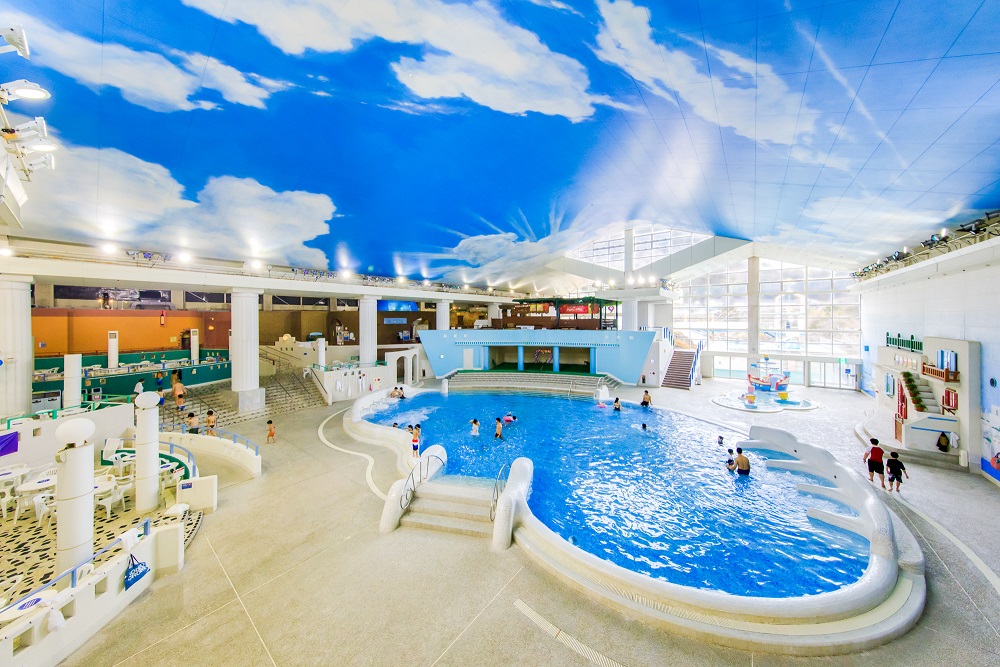
The hotel, which first opened in 1959, was reconstructed and held a new grand opening in July 2023. Cashless payment is possible throughout the entire hotel, and self-check-in machines and an automatic luggage storage system have been installed. The system also enables you to pay from the comfort of your guest room, making it easy for guests from overseas to move around without needing to worry about such matters. This is a convenient and functional next-generation facility. In addition to spectacular open-air baths with a view of the outer rim of Mt. Hakone, during your stay, you can enjoy unlimited access to the Hakone Kowakien Yunessun hot spring resort, where you can play wearing swimsuits, and Motoyu Mori no Yu, a natural hot spring with an open-air bath surrounded by nature.
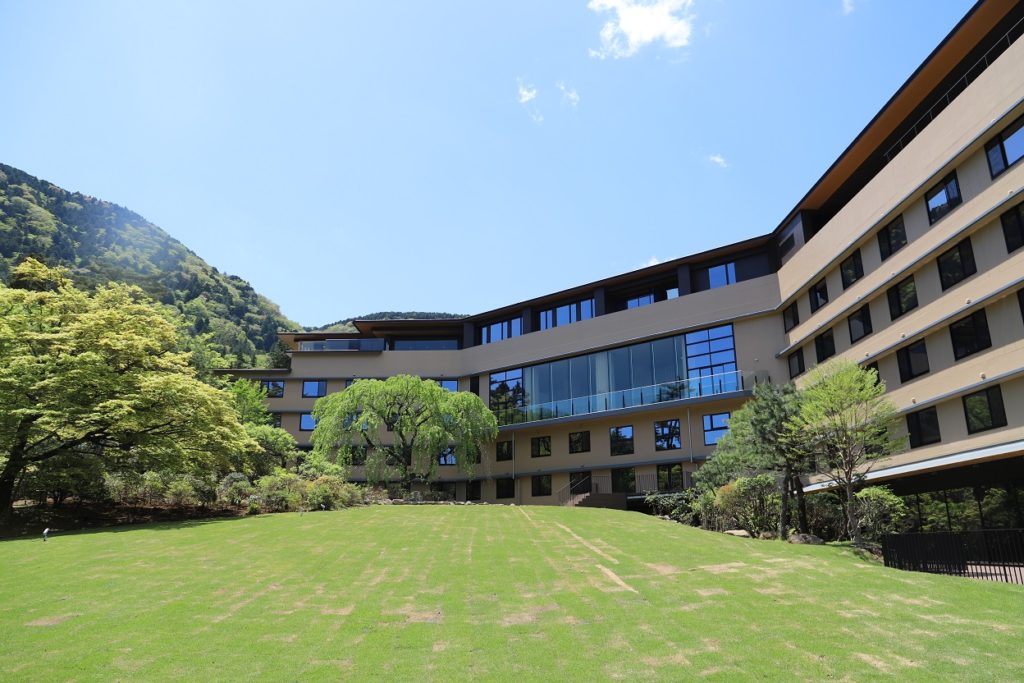
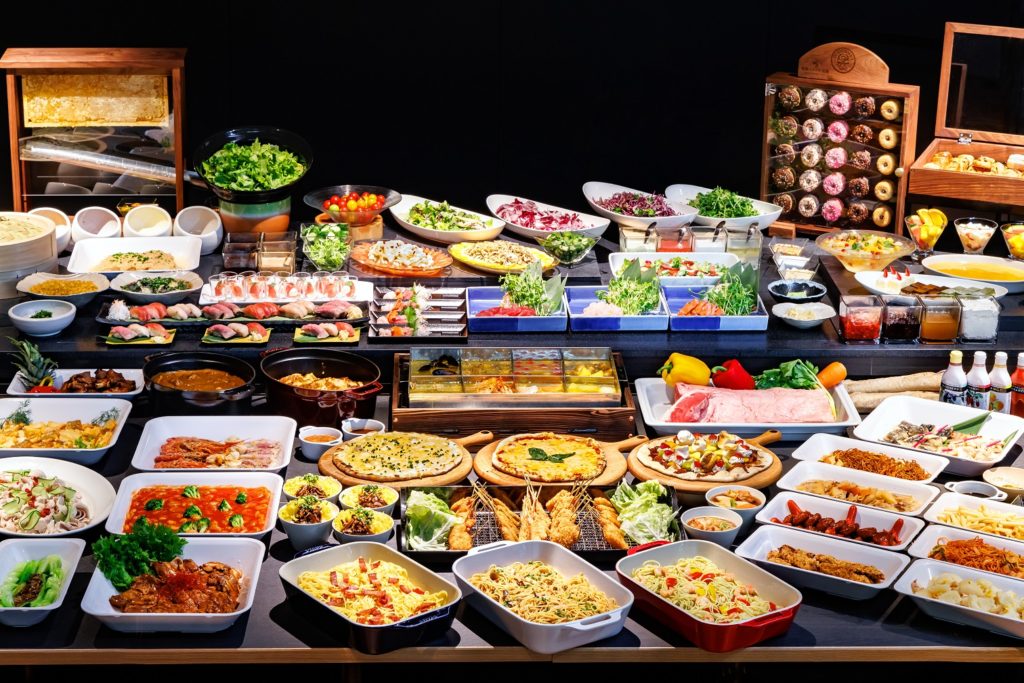
The guest rooms are surrounded by a rich natural environment, and there is a Japanese garden on the premises, created in 1914, where you can enjoy a stroll. There is also a buffet restaurant where you can enjoy the natural scenery of the garden outside the window, and enjoy freshly prepared food from the open kitchen. Since long ago, Hakone has developed various genres of Japanese, Western, and Chinese cuisine to entertain dignitaries from overseas. The hotel has offered Japanese, Western, and Chinese cuisine ever since it was established. Even following the renovation, the hotel still offers diverse cuisine, including more than 60 different Japanese, Western, and Chinese dishes. The buffet is capable of satisfying a variety of preferences.
Click here for room options and plans
Odawara
Experience the castle town of Odawara at a hotel directly connected to the station complex / Tenseien Odawara Station Annex
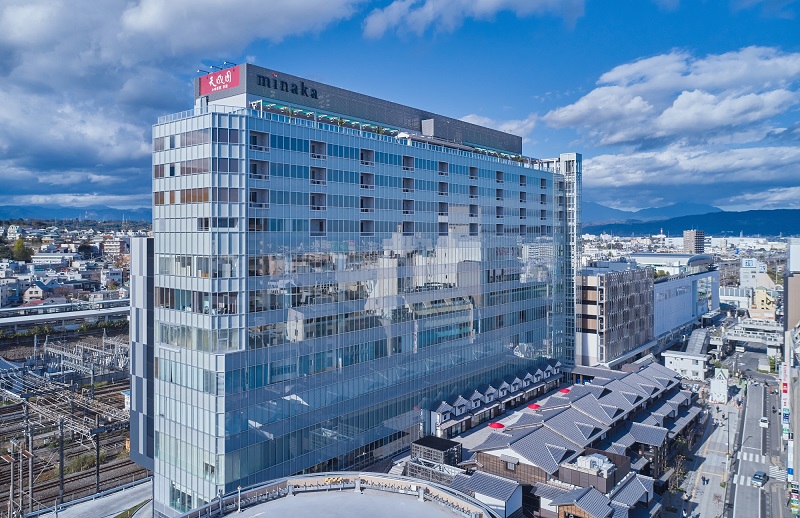
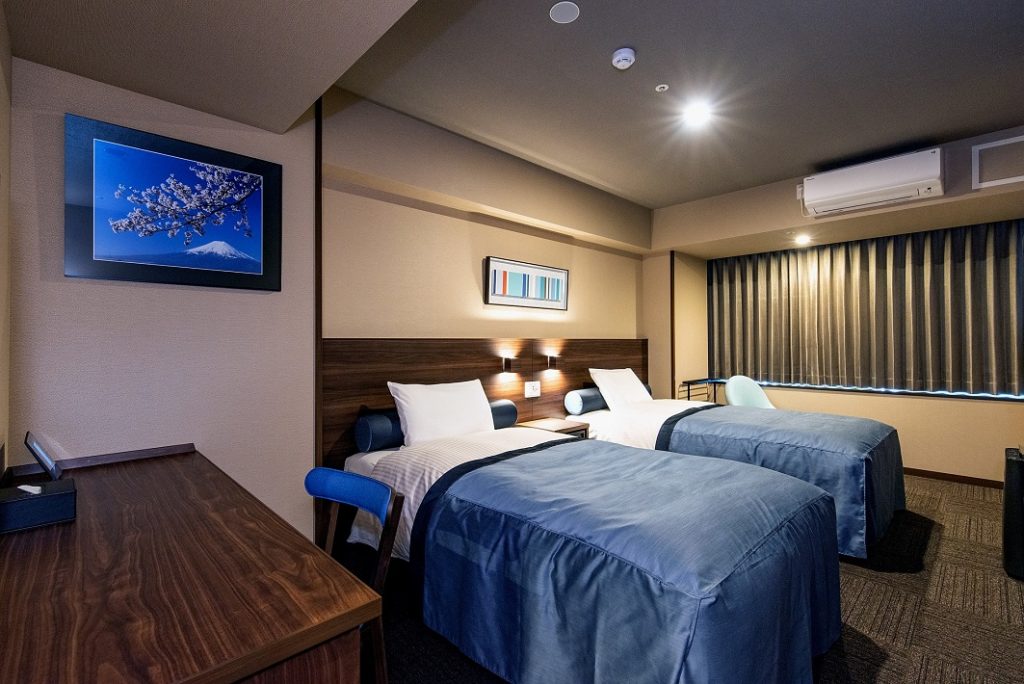
Odawara, the gateway to Hakone and Izu, has the type of old-fashioned atmosphere unique to a castle town. The hotel is located in the new building complex Minaka Odawara at Odawara Station.
The hotel has guest rooms decorated with calm interiors featuring Japanese motifs throughout, enabling you to enjoy the atmosphere of the castle town of Odawara.
The open-air bath and large public bath on the 10th floor of the hotel provide a sense of spaciousness. Enjoy the view from this elevated area while soaking in the bath. There is also an observatory footbath garden on the 14th floor, where you can enjoy the view of Odawara City and Sagami Bay while soaking your feet in natural hot spring water. We hope that the view and the hot springs soothe and refresh you.
The interior of the hotel, which evokes the atmosphere of the good old days of Edo, has a Japanese ambiance throughout, providing a warm space.
There are single rooms, moderate twin rooms, and “Hatago” rooms with a rich Japanese ambiance reminiscent of the inns in Edo-period post towns. This is a functional hotel that can accommodate both solo and family trips, as it is connected directly to the station as well as to Jokamachi Ichiba, which features a variety of restaurants.
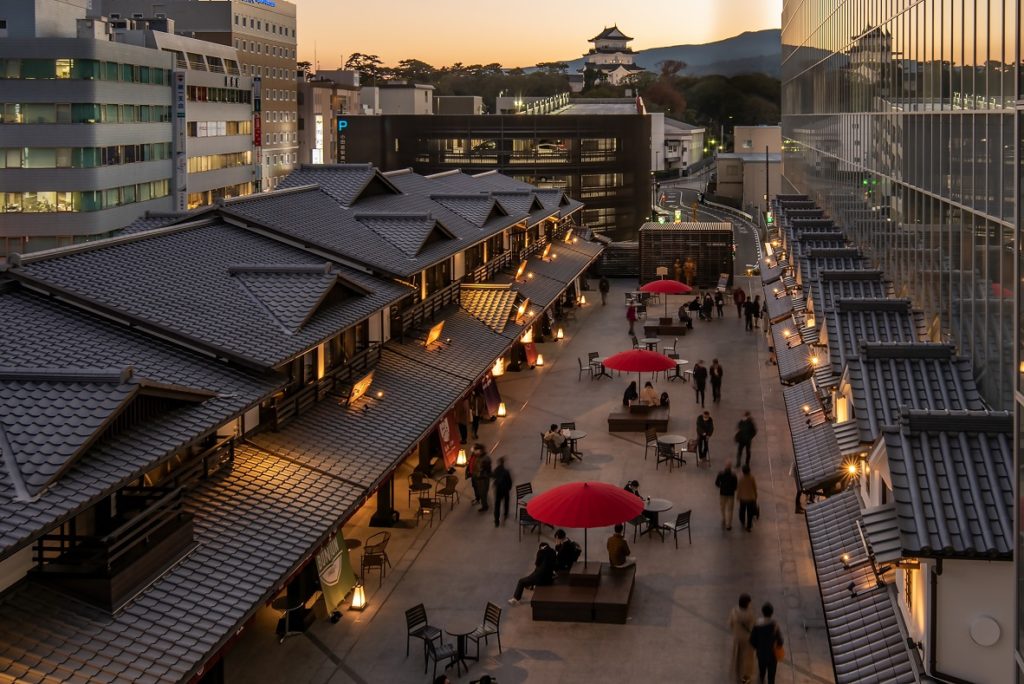
One of the attractions of staying at this hotel is the unlimited choice of dining options. Minaka Odawara is divided into Odawara-Shin-Jokamachi, which is steeped in the atmosphere of Edo, and the Tower building. The restaurant on the 14th floor just above the hotel offers a panoramic view of Odawara City and Sagami Bay. For breakfast, you can enjoy a wide variety of Japanese and Western dishes in buffet style while also enjoying the view. In addition, the Seisho Food Stadium in Odawara-Shin-Jokamachi, which looks like a fun theme park, features a numerous and diverse array of restaurants, including sweets, Western-style cuisine, noodles, and food paste products, an Odawara specialty. We hope that you experience the popular restaurants, local flavors, and cutting-edge tastes that Odawara has brought together.


